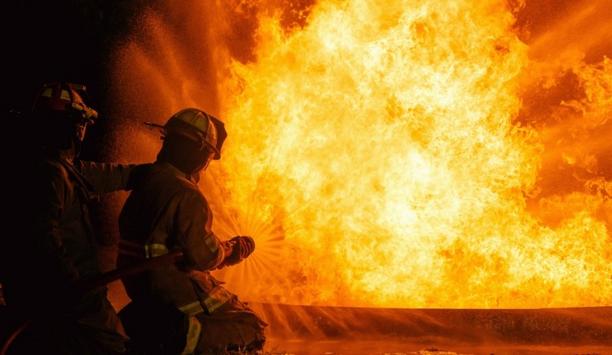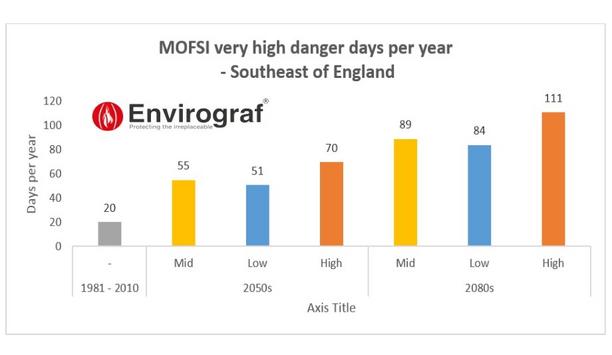Fire safety doesn’t happen by accident, it requires universal attention. With that, Karen Trigg of Allegion UK explores why the importance of working fire doors is often overlooked and why now is an opportune time to bridge the gap between fire safety education and action.
Improving fire safety within UK buildings is a challenge we are all continuously facing. Irrelevant of the sector, it’s of the highest importance for any building type - from schools and hospitals to high-rise residential and industrial facilities. Because when it comes to fire, there are no exemptions.
Most of us are only made aware of the danger of fire from headline disasters and yet, in the year ending March 2021, fire response teams attended 151,086 fires in the UK, of which the average total response time to primary fires in England was 8 minutes and 35 seconds.
Fire doors
Fire doors play a fundamental role in these scenarios and are rigorously constructed and tested to British Standards BS 476: Part 22 or BS EN 1634-1 to ensure they remain fire-resistant for a minimum of 30 minutes (FD30) or 60 minutes (FD60) - holding out long enough to cover response times and evacuation.
Fire doors are the first line of defense in protecting people and property in the event of a fire
Fire door hardware is also meticulously designed to comply with UK Construction Products Regulations and is tested under BS EN 1154, BS EN 1155, and BS EN 1634 standards and CE marked. After all, without functioning hardware, a fire door is rendered useless.
Fire door safety is an area that should never be neglected. Often, fire doors are the first line of defense in protecting people and property in the event of a fire - but only when installed and maintained appropriately. Yet, as incident reports repeatedly highlight, the significance of working fire doors remains habitually overlooked.
The latest in reformed guidelines hope to address this, with the introduction of this year’s Fire Safety Act 2021 and the Building Safety Bill highlighting the diligent detail in which all responsible parties must approach the subject.
Missing knowledge
Fire doors fall under what’s described as a building’s passive fire protection system. At their most basic and when closed, they form a barrier and enable a building to compartmentalize the spread of fire and smoke. When open, they provide an essential means of escape. Yet there’s nothing rudimentary about fire door safety.
However, danger commonly lies where fire door safety is misunderstood. Especially when you consider that last year alone, for local authorities, a staggering 65% of 26,318 planned fire door maintenance and replacement phases did not progress as scheduled - leaving doors neglected and buildings vulnerable. And while some may dispute that 2020 fell to extenuating circumstances, there’s no argument that fire door safety has become too easy to neglect.
Closing The Gap
Evidently, the gap in fire door safety expertise is resulting in poor design choices, faltering standards and a general lack of knowledge. While it’s clear that expertise is lacking across various touchpoints - think product selection, installation, and maintenance - there is momentum to incite real change and the resources to improve awareness and education.
There are several methods to gain an understanding of fire door safety and all from trusted sources
In response, and leading by example, is the Architects Registration Board (ARB) which recently published guidance to suggest fire safety is taught under the architecture curriculum at universities. And while this shows positive steps are being made, the onus can’t solely be passed to the next generation of architectural professionals.
All professional areas must commit and, in an age where information is almost instantaneous, there are several methods to gain a greater understanding of fire door safety - and all from trusted sources.
Fire Door Safety Week
In light of Fire Door Safety Week, the British Woodworking Federation Group shares regular advice and useful toolkits on fire door safety; including a five-step checklist that’s designed to support building owners in assessing their own fire doors (via certification, apertures, gaps, and seals, closers and operation).
Information pools like this provide modern building managers with the know-how they need to monitor and act - making the decision to repair or replace fire doors where necessary.
For those actively involved in the maintenance stage, further guidance on topics such as certification and door closer adjustments is available online and by manufacturer request - showing fire door safety doesn’t need to be tackled alone.
Product datasheets and installation guides
When it comes to product selection and installation, there’s also a wealth of information and walkthroughs available in the form of detailed product datasheets and installation guides. These can often be found online and allow for a greater understanding of the hardware that’s available, leading to better design decisions and more reliable installation. Allegion UK has resources to help undertake product selection, installation, and maintenance checks on fire doors
Aside from product manuals, installers and contractors are commonly offered specialist site visits, training portals, and even hardware classification guides in a bid to assist with projects post-installation. With this, professionals can ensure that their standards don’t slip after time passes, by understanding more about the rounded process that fire door safety is and being ready for maintenance periods when they approach.
The current associations, professional bodies, and manufacturers are on hand more than ever to assist specifiers, installers, and end-users throughout the process that is fire door safety. The support is there, and the resources are readily available and so, there’s now a real opportunity to improve fire safety awareness and education for the better.
How Allegion UK can Help
Allegion UK has a wealth of resources to help professionals undertake product selection, installation, and maintenance checks on fire doors and hardware. This simple toolkit provides information and tips on detecting potential faulty doors and poor installation, a guide to the EN classification system, and a safety checklist.
There’s also an option to order a free door gap tester or download Allegion’s general guide to service and maintenance for free. For information on product selection and installation, please speak to the experts or head to the download center for technical fitting instructions.















